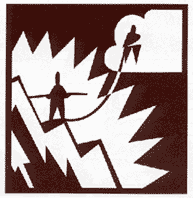 |
|
|
 Will Commercial Networks Prevail in Emerging Nations? Will Commercial Networks Prevail in Emerging Nations?By Larry Press lpress@isi.edu Nearly every nation's network began as a university research project.1 But was the period of academic/research leadership merely a transitory, technology-transfer stage? Will the growth of commercial networks displace the pioneering academic/research networks? In the United States, the National Science Foundation (NSF) backbone has given way to 13 commercial backbone providers,2 and there has been a rapid growth in the number of .com domain names3:
By contrast, there were only 11,463 .edu domains in July 1996.4 The ascendance of commercial networking is also reflected in the evolution of the NSF International Connections Program (ICP), which supports collaboration and communication between between U.S. scientists and educators and their international counterparts.5 Although the initial ICP solicitation was for Europe, much of the effort has gone toward connecting emerging nations. The NSF has helped research and education networks in Latin America, Asia, and Africa with U.S. connection points, communication links, and consultation. The program has been indefatigable and instrumental in bringing the Internet to nations it would otherwise not reach; however, the ICP is in the last year of its management contract with Sprint and will be shifting its focus to high-speed research connectivity. I just visited Chile, where academic networks were commercial almost from the start. In 1986 Chile's first international connections were established via a UUCP network connecting four university computer science departments and REUNA (the National University Network)--a BITNET network. That work was done at the University of Chile, and traffic grew rapidly, making it clear that an IP network with high-speed international connectivity was needed. In 1991, motivated by the need to share the cost of international links, REUNA was formalized as a nonprofit consortium of 19 of Chile's 22 traditional universities and CONICYT, the Chilean Science and Technology Research Commission.6 Politics and controversy over cost sharing led to the establishment of a second academic network, RdC, (Network of Computers).7 In spite of pressure at the time, administration of the Chilean DNS has remained in independent hands at the University of Chile Computer Science Department. From their inception, RdC and REUNA planned to become self-sufficient by providing commercial service as well as by serving universities. Today RdC is roughly 60 percent commercial, and a visit to the REUNA offices has the feel of REUNA's being a completely commercial enterprise with an aggressive marketing department. A year ago, there were five Chilean ISPs and today there are 20, but REUNA remains the largest, with about 50 percent of total Chilean connectivity minutes. Both REUNA and RdC have had the familiar Internet exponential growth. Even though relatively high priced, REUNA has carved out a niche as a full-service provider with extensive, 24-hour support; in-home installation; rich World Wide Web content, some of which is available only to subscribers; PGP support; Web hosting; Web development; Web mirroring; databases; a magazine called Interr@ (a small version of Wired)8; an annual conference; nonstop PR; and the like. On 20 January 1997, REUNA announced a strategic alliance with CTC-Mundo-the ISP arm of a major Chilean telephone company--and previously a competitor. Whereas Chilean university networks are overtly commercial, the universities have fared well. All are connected to the Net, and 30 have active Web sites.9 Volume-related charges for international traffic have led to restrictions on student access in some cases, but that may have been necessary regardless. REUNA universities are also precluded from switching to lower-priced ISPs and from competing with REUNA, which has constrained a few members or academic departments; however, the universities and CONICYT now own a valuable asset. Commercial networking also has thrived, and with 1.226 hosts per 1,000 population, the Chilean connectivity rate is more than twice that of the second most connected nation per capita in South America: Uruguay.10 Both lag behind industrialized nations like Finland, with 62 hosts per 1000, and the United States, with 31 hosts per 1000.11 But the growth has been achieved in spite of all local calls being metered in Chile and the cost of a REUNA account being about $60 per month. Of course the Chilean experience is unique to Chile. Chile has followed an aggressive free market and trade policy, urged by consultant Milton Friedman, since the 1973 military coup. That policy continued without pause when democracy was restored in 1990, resulting in a market-oriented economy and culture as well as economic prosperity, with the economy having grown about 6 percent per year for more than 10 years. The market-oriented policy has also led to telephone privatization, deregulation, and competition. For example, Chile has seven long-distance carriers, and by dialing the appropriate prefix, customers can choose a carrier at the time they place a call. Customers also enjoyed the advantage of strong academic and research programs in their universities.12 The Internet is clearly in commercial hands in Chile, and the university and research community has not suffered. Will this happen in other emerging nations with market economies? If so, will it be good for the university community? What is the situation in your nation? References 1 S. Goodman, L. Press, S. Ruth, and A. Rutkowski. "The Global Diffusion of the Internet: Patterns and Problems," Communications of the ACM, vol. 37, no. 8, August 1994, 27–31, Link. 4 The number of hosts is closer to even, with 3,323,647 in .com and 2,114,851 in .edu. The number of .com hosts overtook the number of .edu hosts in October 1994. 5 Steven N. Goldstein. "Future Prospects for NSF's International Connections Program Activities," Proceedings of INET '95, pp. 681–685, Internet Society, Reston, VA, 1995. Link. 6 Florencio I. Flores. "REUNA: How an Academic Network Can Be Self-Funded," Proceedings of INET 95, Internet Society, Reston, VA, 1995, 7 Ricardo Baeza-Yates, José M. Piquer, and Patricio V. Poblete. "The Chilean Internet Connection, or I Never Promised You a Rose Garden," Proceedings of INET '93, pp. GFC1–GFC9, Internet Society, Reston, VA, 1995, Link. 9 http://www.reuna.cl/reuna/chile/ues.html. 12 R. A. Baeza-Yates, D. A. Fuller, J. A. Pino, and S. E. Goodman.
"Computing in Chile: The Jaguar of the Pacific Rim?" Communications of the ACM, September 1995, Link. |

